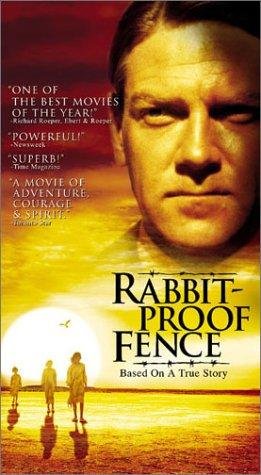|
|
LITR 5831 World / Multicultural Literature Colonial-Postcolonial |
|
|
Film / Video Highlights |
Joyce Strong
October 20, 2015
|
|
Rabbit Proof Fence (2002) |
|
http://www.imdb.com/title/tt0252444/?ref_=ttpl_pl_tt
Directed by Phillip Noyce
Cast: Everlyn Sampi- Molly Craig, Tianna Sansburg- Daisy
Craig Kadibill, Laura Monaghan- Gracie Fields, David Gulpilil- Moodoo, Jason
Clarke- Constable Riggs, and Kenneth Branagh- A.O.Neville
Set in 1931, Rabbit Proof Fence is an Australian drama
that is based on the 2013 novel by Doris Pilkington. It tells the true story of
three half-caste girls who were forcibly taken from their mothers due to a
government policy. Sisters Molly and Daisy, and their cousin Gracie were removed
from the town of Jigalong by
Constable Riggs as a result of an order signed by Chief Protector of Aborigines,
A.O. Neville. Molly, Daisy, and Gracie were sent to Moore River Native
Settlement. The settlement was used to house half-caste children and teach them
the culture of the white race. The girls eventually escaped and spent three
months trying to find their way back home following the rabbit proof fence.
Molly,
Daisy, and Gracie and other aboriginal children sent to Moore River and similar
institutions became known as the Stolen Generations. Aboriginal
children throughout Australia were removed from their homes between 1905 and
1970 by the Australian Federal and State government agencies. They became
disconnected from their families and culture. There were several reasons given
for the removal and one was that the government wanted to eliminate the black
race and assimilate the Aboriginal child in the European way of life.
![]()
Scene 1
Neville, the Chief Protector of the Aborigines
explaining his reason for removing half-caste children from their homes
Is the
title “Chief Protector” a contradiction?
Is Neville really protecting the Aborigines or is he actually protecting
the idea of colonialism?
![]()
Scene 2
Molly, Daisy, and Gracie receiving new clothes after
arriving at Moore River
What do
the statements made by the nun to Molly and Gracie in this scene imply?
![]()
Scene 3
Moodoo bringing a runaway back from visiting her
boyfriend
What do
Moodoo represents as both a tracker for the settlement and a father to one of
the girls?
![]()
Scene 4
Moodoo and Constable Riggs waiting for a sighting of
Molly and Daisy
Moodoo
seems sympathetic to Molly, Daisy, and Gracie. Do you think he could have caught
them like the other girl? Was their
escape to freedom a reminder of what he wants for himself and his daughter?
![]()
Scene 5
Molly and Daisy reunited with their mother
What
did the gathering and chanting of the women symbolized as Molly and Daisy made
their way back home?
An example of a similar history in the United States is
the Native American Boarding School. The boarding schools were established in
the late 19th and early 20th centuries and remained opened
until the 1970s. The objective was to educate and train Native American youths
in the American way of life. They were forbidden to speak their native language
and use their traditional names. Their hair was also cut upon arrival.
Investigations of these boarding schools after their closure revealed mental,
physical, and sexual abuse students experienced at the hands of teachers and
administrators. The effects of attending Native American boarding schools are
still felt in the 21st century.
http://www.npr.org/templates/story/story.php?storyId=16516865
http://www.nrcprograms.org/site/PageServer?pagename=airc_hist_boardingschools






